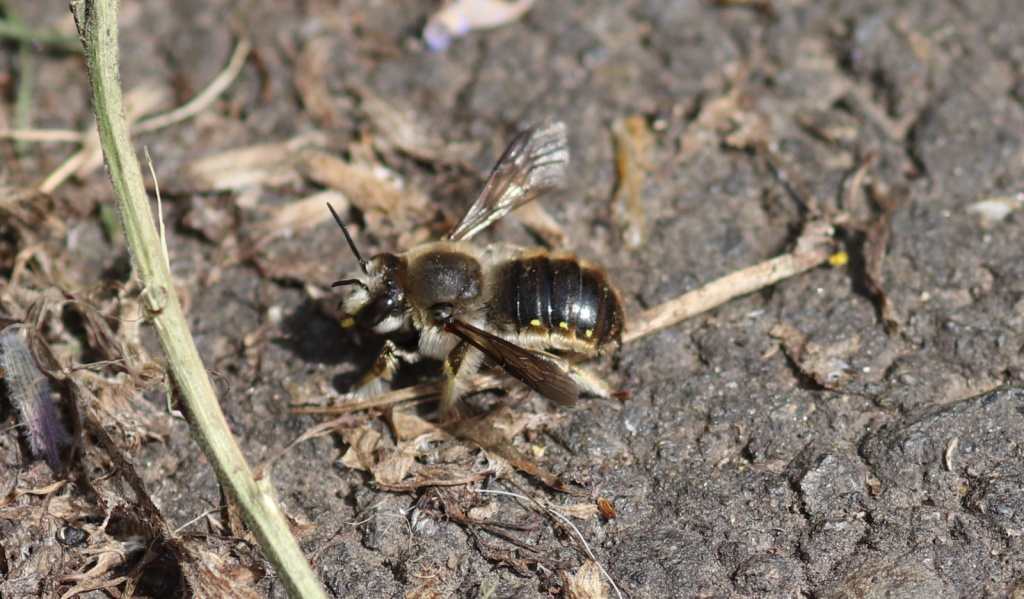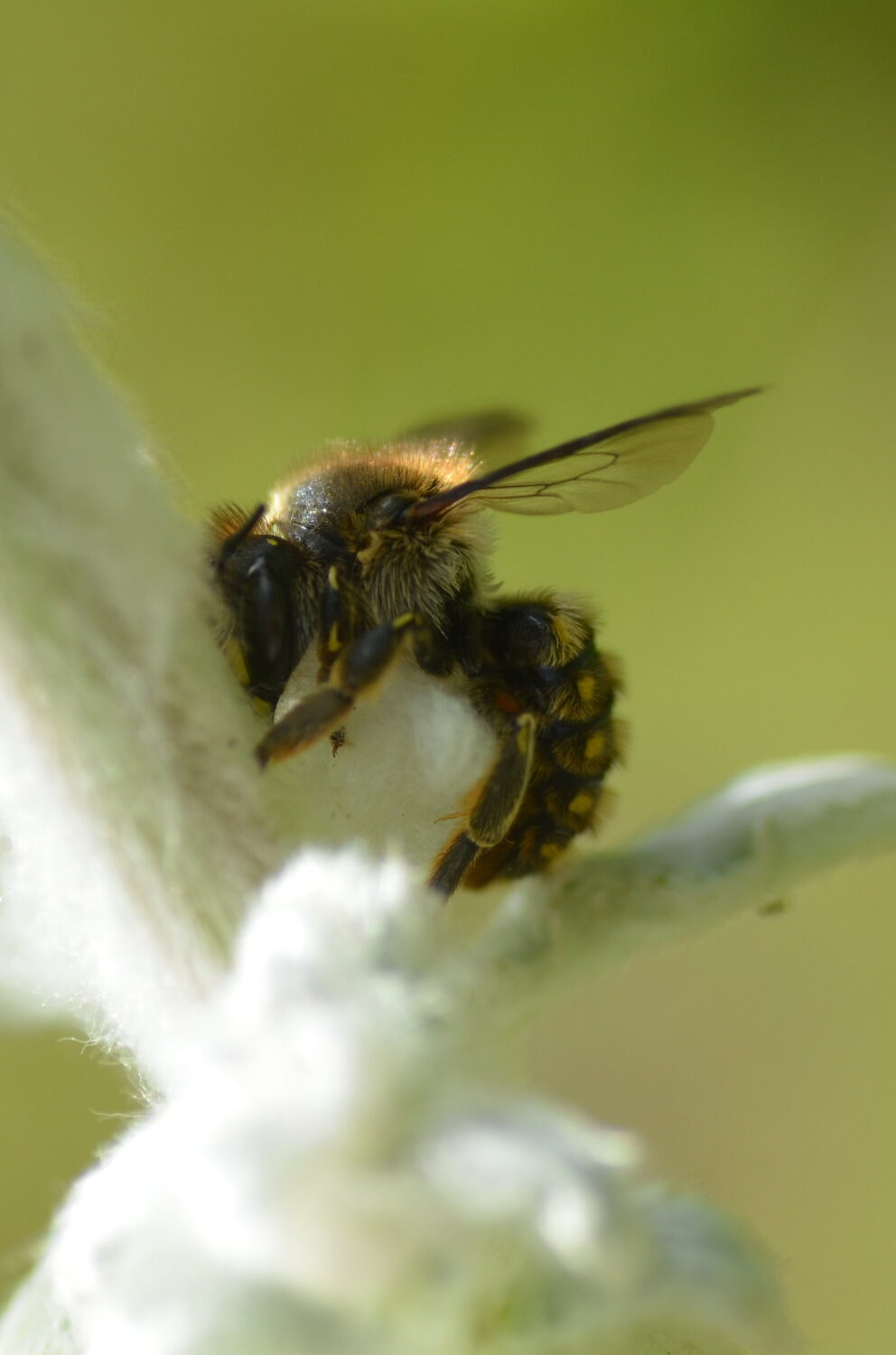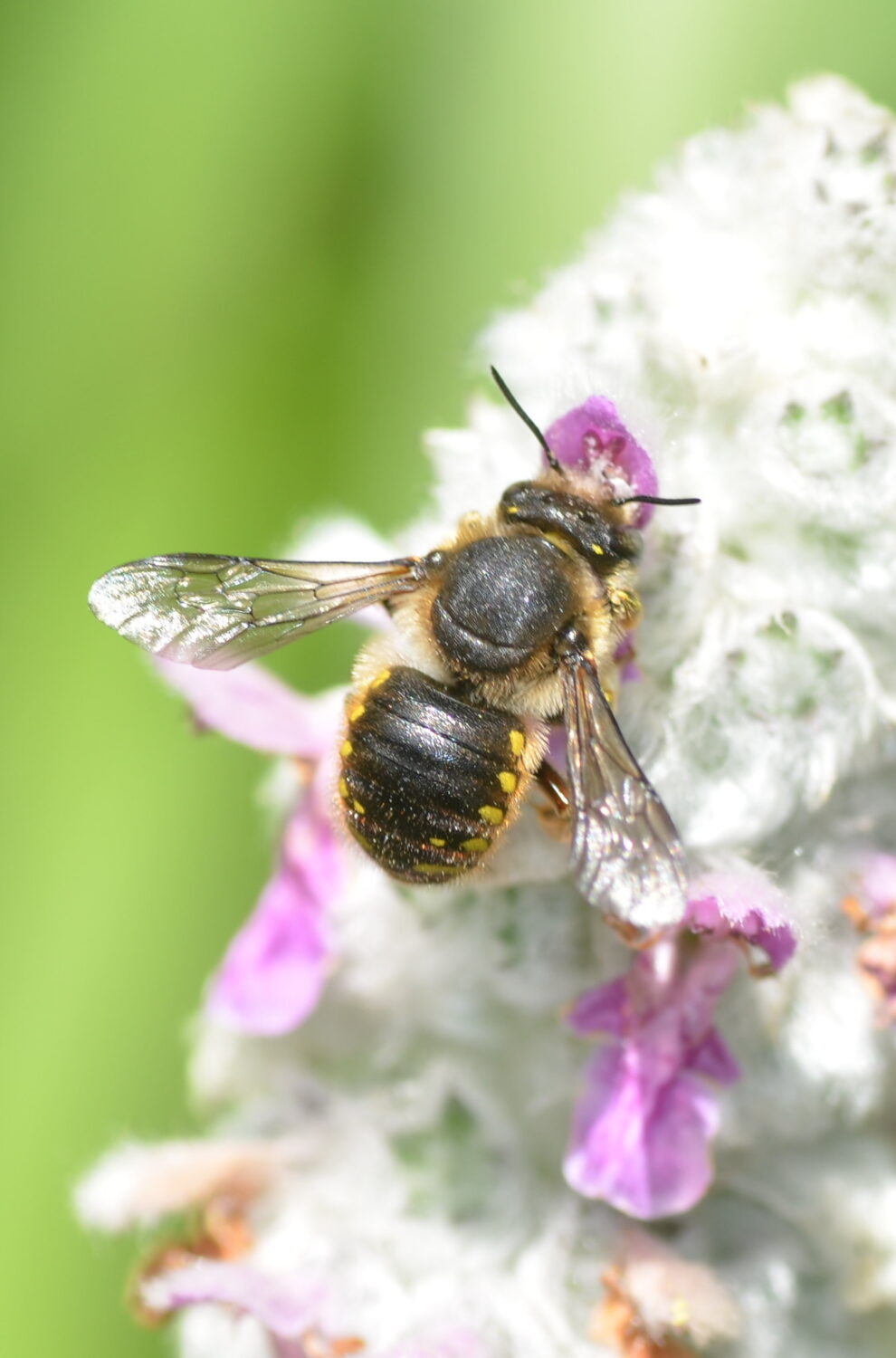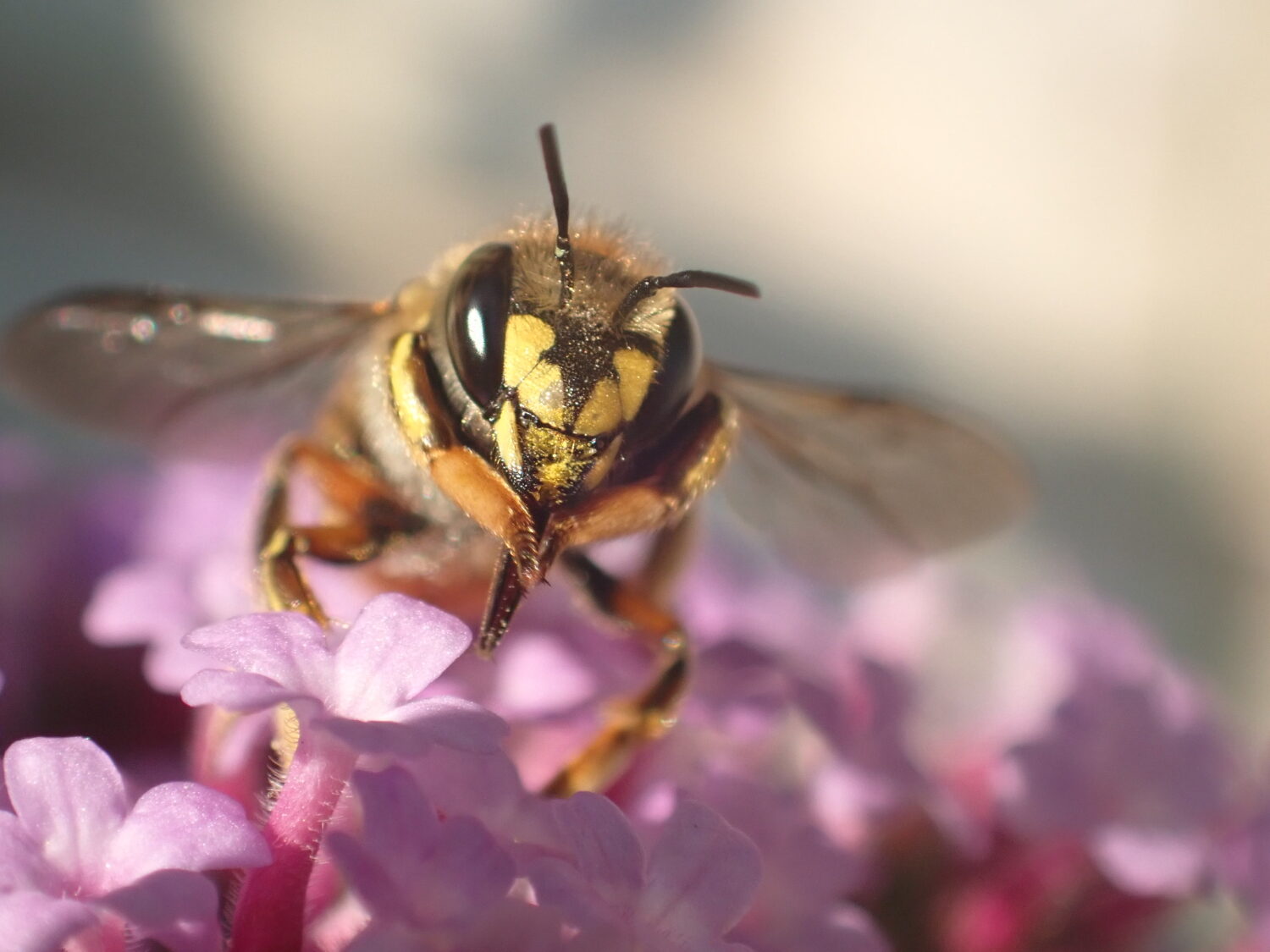A distinctive solitary bee with a feisty attitude, the Wool Carder Bee uses woolly hairs from plants as nesting material.
Fast facts
- Common name
- Wool Carder Bee
- Scientific name
- Anthidium manicatum
- Bee groups
- Solitary bee, from the 'carder bee' group (genus Anthidium)
- When to see it
- June – August
Description
A feisty and robust bee, the Wool Carder Bee is a distinctive solitary bee that uses plant fibres as nest material. It has distinctive yellow spots or bars running down each side of the abdomen. Look out for this bee on woolly plants such as Lamb’s-ear and Great Mullein.
Identification
A large and robust solitary bee with yellow spots or bars running down the abdomen. Males have four spines at the tip of their abdomen. Males are larger than the females, which is an uncommon feature in solitary bees. Both females and males have a yellow face.
Females and males are tricky to tell apart, but if you find one pouncing on other insects, it is a male!
Ecology
Males are fiercely territorial and will even take on bumblebees that visit their flower patch. Males use their spines at the tip of the abdomen to attack intruders. Females collect fibres from woolly leaves such as Lamb’s-ear and Great Mullein. Nesting occurs in walls, dead wood, hollow stems and cliff faces.
Despite its name, the Wool Carder Bee is not of the Carder bumblebees. It is a species of solitary bee from the genus Anthidium.

Spotted this bee?
Share your sighting to the North East Bee Hunt and contribute to the conservation and study of our region’s bees.
Regional distribution
It is a rarer bee in the region, with one record from each of Wylam, Berwick and County Durham. It is a southern species that is extending its distribution northwards. The Wool Carder is one to look out for if you have Lamb’s-ear or Great Mullein in your garden or local greenspace.

Females collecting plant fibres to use as nest material © Ryan Clark

